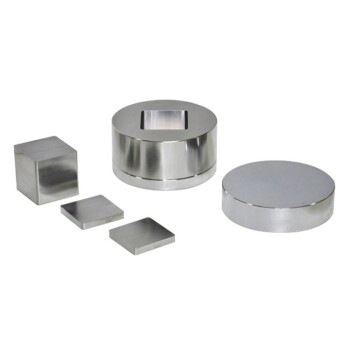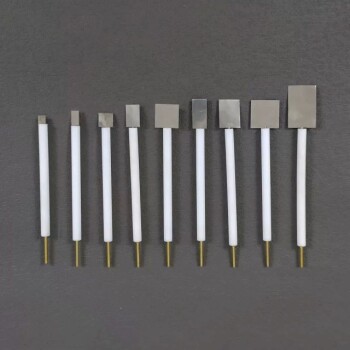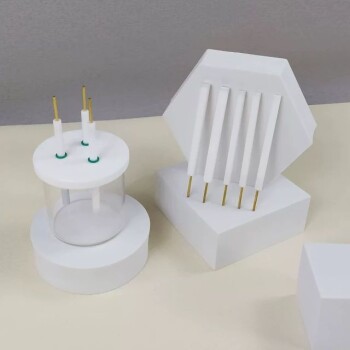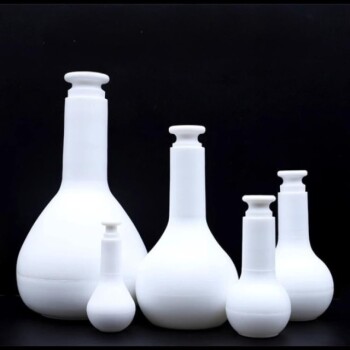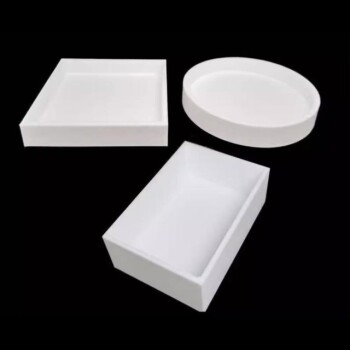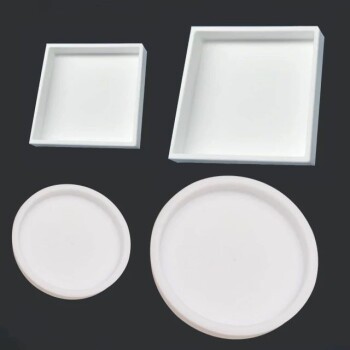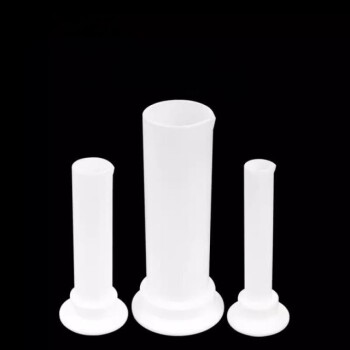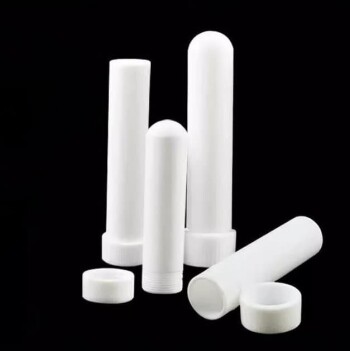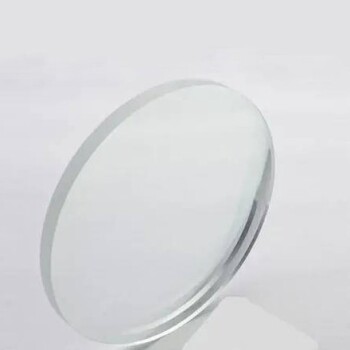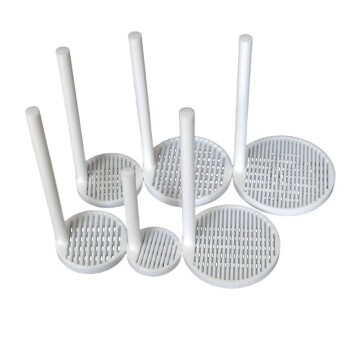Classification of Microplates
Pore Density
Microtiter plates are available in a range of well densities, including 6, 12, 24, 48, 96, 384, 1536, and 3456 wells. These variations cater to different experimental needs, offering a balance between sample volume, reagent efficiency, and operational complexity.
Higher density plates, such as those with 1536 or 3456 wells, significantly reduce the amount of reagents required per experiment. This reduction is particularly beneficial in high-throughput screening and other resource-intensive applications. However, the increased density necessitates the use of automated pipetting systems to handle the smaller volumes accurately and efficiently.
Conversely, lower density plates, like those with 6 or 12 wells, are often preferred for experiments requiring larger sample volumes or those that do not benefit from high-throughput capabilities. These plates are easier to handle manually, making them suitable for smaller-scale experiments or initial testing phases where automation is not yet required.
The choice of pore density is thus a critical consideration, balancing the need for cost-effectiveness and operational efficiency against the complexity of the experimental setup.
Materials
When selecting microplates for laboratory applications, the choice of material is crucial as it directly impacts key performance metrics such as transmittance, autofluorescence, and overall suitability for various assays. Common materials used in the production of microplates include polycarbonate (PC), polystyrene (PS), and cyclic olefin copolymer (COC). Each of these materials offers distinct advantages and trade-offs, making them suitable for different experimental needs.
Polycarbonate (PC) is renowned for its high impact resistance and thermal stability, making it ideal for applications requiring large temperature variations, such as PCR. However, PC is known to exhibit higher autofluorescence compared to other materials, which can be a drawback in sensitive fluorescence assays.
Polystyrene (PS) is a versatile material that is widely used due to its cost-effectiveness and good optical properties. It offers moderate transmittance and relatively low autofluorescence, making it suitable for a broad range of applications, including ELISA and optical tests. However, PS is not as durable as PC and can be prone to deformation under high temperatures.
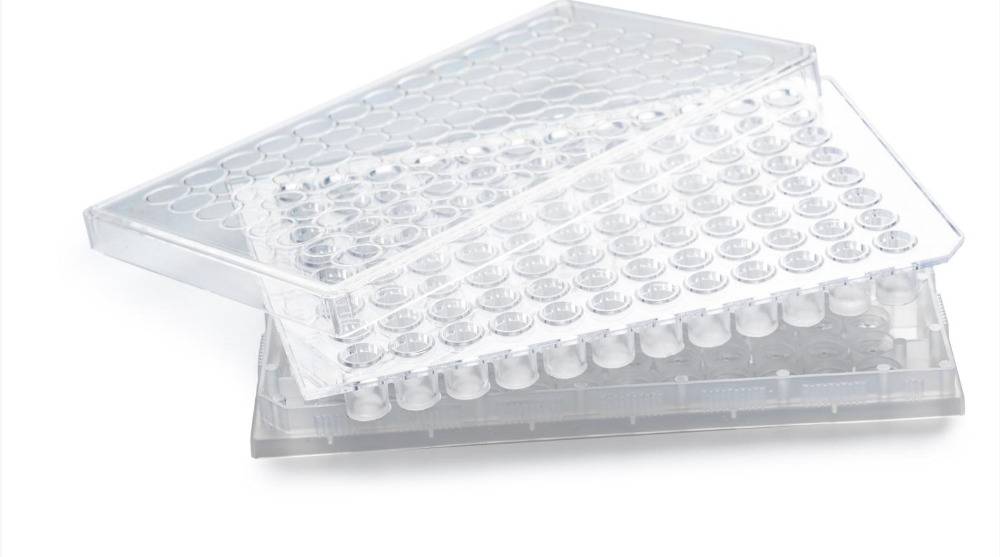
Cyclic olefin copolymer (COC) is prized for its excellent optical clarity and low autofluorescence, making it the material of choice for high-sensitivity fluorescence and luminescence assays. COC also offers good chemical resistance and thermal stability, although it is generally more expensive than PC and PS.
To summarize, the choice of material for microplates should be guided by the specific requirements of the laboratory application, balancing factors such as transmittance, autofluorescence, thermal stability, and cost. The table below provides a quick comparison of these materials:
| Material | Transmittance | Autofluorescence | Thermal Stability | Cost |
|---|---|---|---|---|
| Polycarbonate (PC) | Moderate | High | High | Moderate |
| Polystyrene (PS) | Good | Low | Moderate | Low |
| Cyclic Olefin Copolymer (COC) | Excellent | Very Low | Good | High |
Understanding these characteristics can help researchers make informed decisions when selecting microplates for their specific laboratory needs.
Colors
Microplates are manufactured in a variety of colors, including clear, black, white, and gray. The choice of color can significantly influence the quality of data obtained from assays, particularly in fluorescence and luminescence assays.
-
Clear Microplates: Ideal for applications requiring maximum light transmission, such as optical density (OD) measurements and traditional absorbance assays. They are also suitable for microscopy due to their transparency.
-
Black Microplates: Preferred for fluorescence assays where minimizing background noise is crucial. The black color absorbs stray light, enhancing the signal-to-noise ratio and improving the accuracy of fluorescence readings.
-
White Microplates: Commonly used in luminescence assays where the emitted light needs to be reflected back to the detector. The white color provides a high-reflectance surface, which can boost the sensitivity of luminescence measurements.
-
Gray Microplates: Often used in applications where a balance between light absorption and reflection is needed. They are particularly useful in assays that require both fluorescence and luminescence measurements.
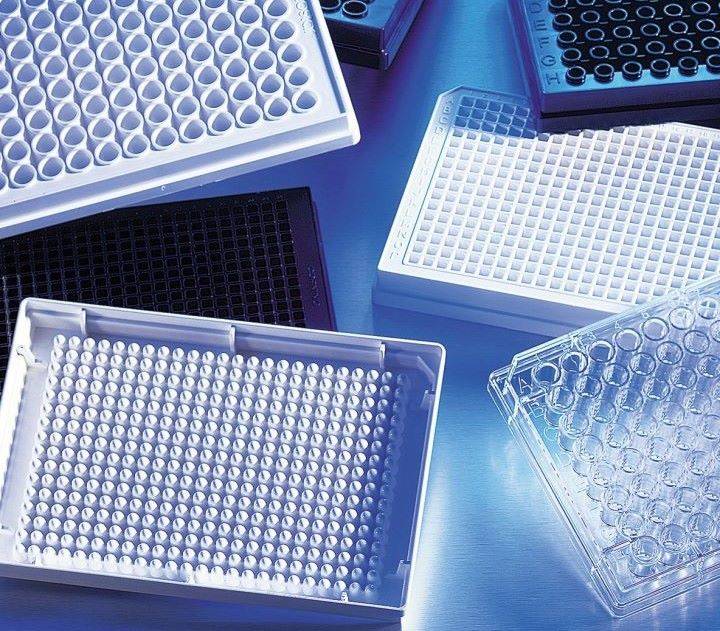
Selecting the appropriate color for your microplate is essential for optimizing experimental outcomes. Each color offers unique advantages that cater to specific assay requirements, ensuring more reliable and accurate data.
Well Shapes
Microplates, integral to laboratory workflows, come in various well shapes designed to optimize specific experimental needs. The two primary well shapes are round and square, each offering distinct advantages and trade-offs.
Round Wells
- Sample Volume: Round wells are particularly beneficial for handling larger sample volumes, making them ideal for applications requiring extensive reagent use.
- Light Transmission: Their circular geometry ensures uniform light transmission, which is crucial for assays relying on spectrophotometry and fluorescence.
- Mixing Efficiency: The rounded edges facilitate better mixing dynamics, enhancing the efficiency of reactions that require thorough homogenization.
Square Wells
- Sample Volume: Square wells are more space-efficient, allowing for higher well density within the same plate footprint, which is advantageous for applications requiring multiple, smaller samples.
- Light Transmission: While slightly less uniform than round wells, square wells still provide adequate light transmission for most optical assays.
- Mixing Efficiency: The sharp corners of square wells can create localized turbulence, aiding in the mixing of viscous or particulate-laden samples.
Choosing between round and square well shapes depends on the specific requirements of the experiment, balancing factors such as sample volume, light transmission, and mixing efficiency to achieve optimal results.
Bottom Shapes
Microplates come in various bottom shapes, each designed to optimize specific laboratory applications. The most common bottom shapes include flat, conical, rounded, and curved. These shapes are not merely cosmetic; they significantly influence the performance and accuracy of experiments.
-
Flat Bottoms: Ideal for applications such as spectrophotometry and ELISA (Enzyme-Linked Immunosorbent Assay), flat bottoms provide stable surfaces for accurate light transmission and absorbance measurements. They are also suitable for high-throughput screening where precise optical readings are critical.
-
Conical Bottoms: These are particularly beneficial for mixing and centrifugation. The conical shape facilitates better mixing of reagents and easier removal of supernatants, making them a preferred choice in applications requiring efficient liquid handling.
-
Rounded Bottoms: Often used in cell culture applications, rounded bottoms mimic the natural environment of cells, promoting better cell attachment and growth. They are also advantageous in microplate readers where the curvature helps in evenly distributing light across the well.
-
Curved Bottoms: Similar to rounded bottoms, curved bottoms are tailored for cell-based assays and fluorescence-based assays. The curvature aids in light dispersion, enhancing the clarity and precision of fluorescence readings.
| Bottom Shape | Application | Advantage |
|---|---|---|
| Flat | Spectrophotometry, ELISA | Stable surface for accurate optical readings |
| Conical | Mixing, Centrifugation | Facilitates better mixing and supernatant removal |
| Rounded | Cell Culture | Mimics natural cell environment for better attachment |
| Curved | Cell-Based Assays, Fluorescence | Enhances light dispersion for clearer readings |
The choice of bottom shape is thus crucial in ensuring the success and reliability of various laboratory experiments, reflecting the nuanced demands of different scientific applications.
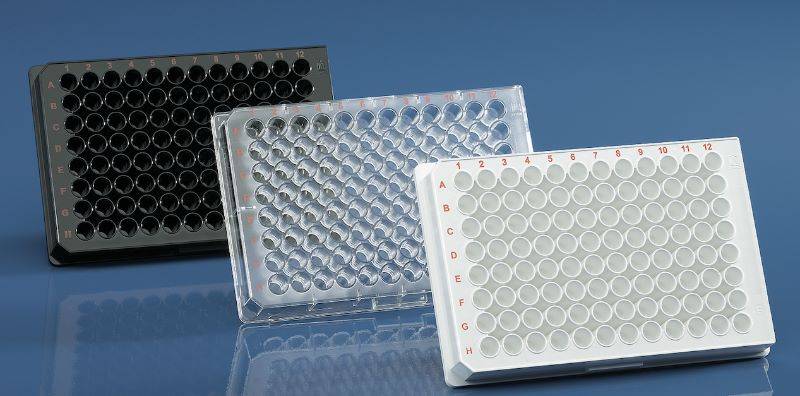
Surface Finishes
Surface treatments in microplates play a crucial role in determining the interactions between the plate and the samples, thereby influencing the outcome of biochemical and cell-based assays. These treatments range from no binding to high binding, each offering distinct advantages and limitations depending on the specific application.
For instance, no-binding surfaces are ideal for applications where non-specific interactions need to be minimized, such as in protein assays. These surfaces reduce the risk of proteins sticking to the wells, ensuring more accurate and reproducible results. On the other hand, high-binding surfaces are designed to enhance the attachment of cells or biomolecules, making them suitable for cell-based assays where strong adhesion is necessary.
| Surface Treatment | Application | Advantages |
|---|---|---|
| No Binding | Protein Assays | Minimizes non-specific interactions |
| High Binding | Cell-Based Assays | Enhances cell or biomolecule attachment |
The choice of surface finish can significantly impact the performance of the microplate, necessitating careful consideration based on the specific requirements of the laboratory application.
Applications and Considerations
ELISA and Optical Applications
96-well plates are the industry standard for ELISA (Enzyme-Linked Immunosorbent Assay) due to their high density and compatibility with automated pipetting systems. These plates are designed to optimize reagent usage and minimize sample waste, making them ideal for high-throughput screening in research and diagnostic settings.
For optical applications, including microscopy and various spectroscopic tests, transparent materials such as polystyrene (PS) and cyclic olefin copolymer (COC) are preferred. These materials offer superior light transmittance and minimal autofluorescence, ensuring accurate readings in light-sensitive assays. The transparency of these materials is crucial for applications where light transmission through the plate is necessary, such as in absorbance and fluorescence measurements.
| Material | Transmittance | Autofluorescence | Suitability for Optical Applications |
|---|---|---|---|
| Polystyrene (PS) | High | Low | Excellent for microscopy and spectroscopy |
| Cyclic Olefin Copolymer (COC) | Very High | Very Low | Ideal for high-precision optical tests |
The choice of material in optical applications is not just about transparency; it also impacts the overall performance and reliability of the tests. For instance, COC is known for its very low autofluorescence, making it the preferred choice for assays that require high sensitivity, such as single-molecule detection and advanced fluorescence microscopy.
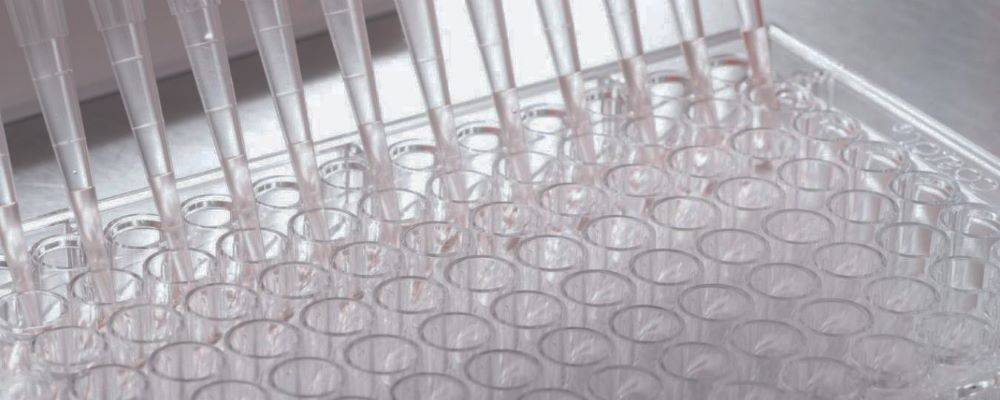
PCR Applications
PCR plates are specifically designed to accommodate the stringent requirements of polymerase chain reaction (PCR) processes, which involve significant temperature fluctuations. These plates are typically constructed from polycarbonate (PC) and polypropylene (PP), materials renowned for their thermal stability and durability. The choice of these materials ensures that the plates can withstand the high temperatures necessary for denaturation, as well as the cooler temperatures required for annealing and extension phases.
| Material | Characteristics | Applications in PCR |
|---|---|---|
| Polycarbonate | High thermal stability, good optical clarity, resistant to mechanical stress | Suitable for high-throughput PCR, real-time PCR, and other temperature-sensitive assays |
| Polypropylene | Excellent chemical resistance, low moisture absorption, good thermal properties | Ideal for standard PCR, long-term storage of PCR products, and freeze-thaw cycles |
In addition to their material properties, PCR plates often feature specialized designs such as thin walls and low thermal mass, which help to maintain uniform temperature distribution across the plate. This uniformity is crucial for ensuring consistent and accurate amplification of target DNA sequences. Furthermore, the surface of these plates is often treated to minimize non-specific binding, thereby enhancing the purity and yield of the PCR products.
When selecting PCR plates, it is essential to consider the specific requirements of the assay, including the need for automation, the volume of reagents, and the sensitivity of the detection method. For instance, high-throughput laboratories may prefer plates with higher well densities and compatibility with automated pipetting systems, while research labs focusing on real-time PCR might prioritize optical clarity and low autofluorescence.
Cell-Based Analysis
For cell-based analysis, the selection of microplates is crucial due to the specific requirements for cell growth and observation. Non-sterile plates necessitate meticulous aseptic treatment to prevent contamination, ensuring a controlled environment conducive to cell viability and proliferation. The surfaces of these plates must be hydrophilic, facilitating strong cell attachment and optimal growth conditions.
Transparent bottoms are indispensable in cell-based assays, as they enable researchers to read cellular activity from the bottom, providing clear and unobstructed views. This feature is particularly advantageous in high-throughput screening and live-cell imaging, where continuous monitoring and precise measurements are essential.
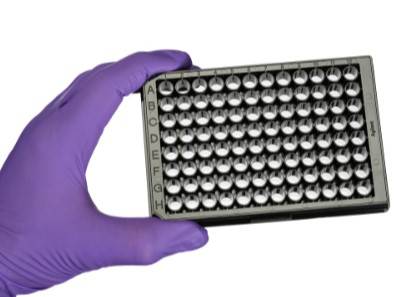
| Requirement | Description |
|---|---|
| Aseptic Treatment | Prevents contamination; ensures a sterile environment for cell growth. |
| Hydrophilic Surfaces | Enhances cell attachment and proliferation; supports optimal cell growth. |
| Transparent Bottoms | Allows for clear, bottom-up reading; crucial for high-throughput screening. |
Enzyme Labeling Instruments
When selecting microplates for enzyme labeling instruments, it is crucial to consider the impact of variations in microplate size and well position on data accuracy. These variations can introduce significant errors, particularly in high-throughput screening and sensitive assays.
For instance, the positioning of wells on different plate formats can lead to discrepancies in pipetting accuracy and uniformity. This is especially critical in assays that require precise dosing and consistent mixing. Additionally, the size of the wells can affect the volume of reagents used, which in turn impacts the sensitivity and reliability of the results.
To mitigate these issues, careful selection and calibration of microplates are essential. This involves choosing plates with standardized well dimensions and positions, as well as ensuring that the instrumentation is calibrated to handle these specific plate formats. Regular calibration checks are also necessary to maintain data integrity over time.
Furthermore, the choice of microplate material can also influence the performance of enzyme labeling instruments. Materials like polystyrene (PS) and cyclic olefin copolymer (COC) are preferred for their optical clarity and low autofluorescence, which are critical for accurate readings in fluorescence-based assays.
In summary, the careful selection and calibration of microplates are paramount for ensuring the accuracy and reliability of data generated by enzyme labeling instruments. This process involves considering not only the size and position of wells but also the material properties of the plates to optimize assay performance.
Related Products
- Special Heat Press Mold for Lab Use
- Square Lab Press Mold for Laboratory Applications
- Platinum Sheet Electrode for Laboratory and Industrial Applications
- Rotating Platinum Disk Electrode for Electrochemical Applications
- Custom PTFE Teflon Parts Manufacturer for F4 PTFE Volumetric Bottle
Related Articles
- Preparation Techniques for Solid Samples in Infrared Spectroscopy
- Fused Silica Crucible: Properties, Applications, and Preparation Process
- Choosing Microplates for Zymography Assays
- Comprehensive Guide to Metal Mold Pressing: Techniques, Equipment, and Applications
- Comprehensive Guide to Cylindrical Lab Electric Heating Press Mold: Technology and Applications


